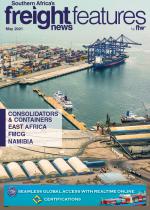Namibia is weaning itself of dependence on fossil-fuelled power from Eskom and its own power stations through investment in solar and wind energy to supplement a hydropower plant at Ruacana. The goal is to meet 70% of the country’s power needs through renewable generation by 2030.This is providing project work throughout the country for logistics companies. Namibia is considered to have some of the best wind and solar conditions in the world for power generation.Recently, the government approved the construction of four wind power plants to generate 100 megawatts (MW) in the Tsau Khaeb (Sperrgebiet) National Park near Lüder itz Bay.NamPower has also announced plans to generate 150 MW through the combination of a 20 MW PV solar power project; a 40 MW wind power project; a 40 MW biomass power project; and a 50 MW firm power project.Speaking at the announcement, the Ministry of Environment and Tourism executive director Teofilus Nghitila said it would place Namibia in a position that it would have most of its energy generated from wind energy.There are also plans to use invasive bush as feedstock for biomass generators. The private sector is partnering in the transition. An independent power producer framework supports private ownership of large-scale power plants. They can feed into the NamPower grid or sell directly to large power users.The government also provides soft loans through its Solar Revolving Fund to Namibian citizens installing renewable energy for commercial or private use.

